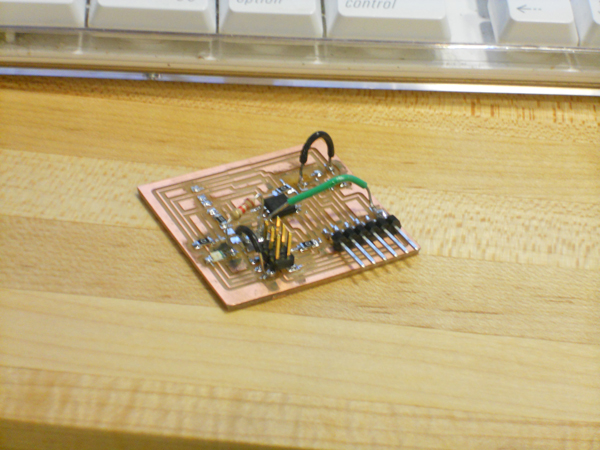Sensor #1: The Single Use Short Circuit Detect-OH GOD MY BOARD IS ON FIRE!
For my first sensor I wanted to create a device which would be able to detect a single short circuit.

But seriously folks. I wanted to try designing a board from complete scratch. This was a poor short term decision, but I learned a LOT. For instance:
- If you want an LED to light up when the chip is powered, you should NOT put the LED and the 10k resistor directly in between VCC and the chip. Rather, it should be parallel and should go directly to ground.
- A 10k resistor makes your LED very very dim. You should use a 1k resistor.
- Soldering wires to your board is faster than milling a new one.
- Lots of de/resoldering work will make you much more likely to accidentally pull up traces.
- Using a multimeter to measure resistance while the board is plugged in is NOT a good idea.
- You can reuse programming pins for i/o pins, but if you're a newbie it might be easier not to try.
I actually got it to the point that I could program the thing, but once I pulled up 3 traces and sparks / smoke started flying I decided to put frankenboard aside and redesign the whole thing with lessons learned applied.
Sensor #2: Light, heat, and proximity
My second board design was much more effective. PLUS it worked the first time!

It has a light sensor and a (previously on fire so not sure how well it works) thermistor. I also had an extra SHARP proximity sensor lying around so I figured I would throw that on there as well.
My application isn't everything I hoped it would be, since my original board ended up being more of a time sink than I had hoped. This application has 6 images of the boston skyline. The dimensions are heat and light. There is a cold and warm version for "afternoon" "dusk" and "night." The image that appears corresponds to what the sensor detects.
I plan to set this thing up at my apartment so that I can keep tabs on various environmental factors.